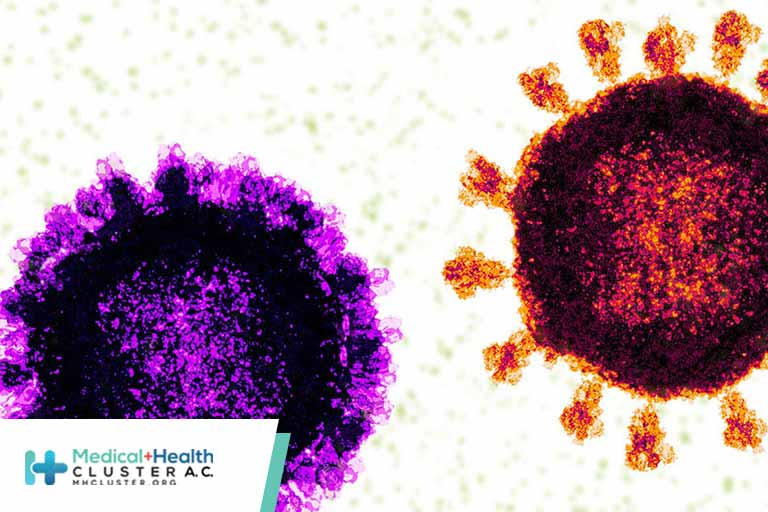En atención a la creciente preocupación sobre la confianza en...
Leer más
Flurona: Worrisome but No Need to Panic

Nearly 2 years into the pandemic, the idea of dealing with “flurona” — having the flu and COVID-19 at the same time — is particularly unappealing, but reports of cases have cropped up across the country.
The flurona phenomenon is the latest unwelcome development in the ongoing public heath crisis, although the concept of co-infection is not new, and it is manageable, physicians and public health experts told MedPage Today.
Kids and Co-Infection
“I think it’s important for people to be aware that there are … viruses other than SARS-CoV-2 out there,” Flor Munoz, MD, MSc, associate professor of pediatrics, molecular virology, and microbiology at Baylor College of Medicine in Houston, told MedPage Today. “There can be co-infections.” Munoz also is the medical director of transplant infectious diseases at Texas Children’s Hospital in Houston.
During the past summer and the Delta surge, there were cases of simultaneous respiratory syncytial virus (RSV) and COVID-19 infection, she noted, adding that flurona cases will continue to be detected if there is proper testing for viruses.
But that doesn’t mean it’s a good thing to have both influenza and COVID-19 at the same time: There is treatment for influenza, and some treatment for COVID-19 for adults, but Munoz noted that children don’t necessarily have the same COVID-19 treatment options. Many young children are still not eligible for the COVID-19 vaccine although the CDC recommends the flu vaccine for those ages 6 months and older.
A growing number of co-infection cases in children are being reported in the U.S., according to the New York Times. Both the flu and COVID-19 can cause pneumonia, croup, vomiting, and diarrhea, among other ailments and symptoms. Clinically, they are not always distinguishable, so proper testing and early medical attention are important.
Some individuals who get flurona face a risk of developing worse disease, such as children with underlying heart or lung problems, according to Munoz.
While data have indicated that children who get COVID-19 fare better with the virus, they still get sick. “With COVID right now, we’re seeing exactly that,” Munoz said, with the CDC reporting a record number of children with COVID-19 being hospitalized. She also pointed out that the 2020/2021 flu season impacted less people, but the 2021/2022 season is picking up.
Take-Home Message: Get Vaccinated
Rachael Lee, MD, MSPH, chief hospital epidemiologist and an associate professor of infectious diseases at the University of Alabama at Birmingham, told MedPage Today, “We’ve seen these co-infections with other respiratory viruses and COVID since March 2020. We would expect to see flu as well as COVID.”
Lee highlighted a case from Israel of an unvaccinated pregnant women with flurona, who had mild symptoms, but “Potentially, there is concern for worse symptoms,” she said, adding that hospitals are already overloaded by the Omicron surge.
Lee stressed that vaccination against the flu and COVID-19 protects individuals and their loved ones, as well as hospitals.
William Petri, MD, PhD, professor of medicine and vice chair for research of the department of medicine at the University of Virginia in Charlottesville, told MedPage Today that both the flu and COVID-19 infect the epithelial cells in the lungs, and that infection could worsen as more cells get involved.
He stressed that with vaccines and boosters, along with mask wearing, social distancing, and COVID-19 testing, the “individual has some ability to chart their own course.”
Last week, Los Angeles reported its first case of flurona.
A spokesperson for the L.A. County Department of Public Health told MedPage Today via email that “Concurrent infection with more than one respiratory virus is exceedingly common and there is no reason to expect that SARS-CoV-2 should be an exception to this rule. We have seen SARS-CoV-2 and influenza multiplex test results where both influenza and SARS-CoV-2 were positive.”
However, the health department is “not tracking these occurrences systematically and cannot tell you how frequently they have occurred,” according to the spokesperson.
“The best way to prevent concurrent infection with influenza and SARS-CoV-2 is to get vaccinated with both influenza and COVID-19 vaccines, which are both highly effective and can be administered at the same time,” the spokesperson said.
Créditos: Comité científico Covid




